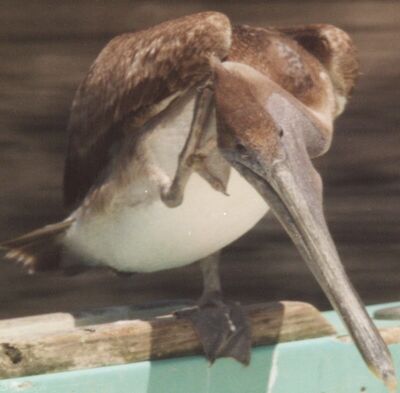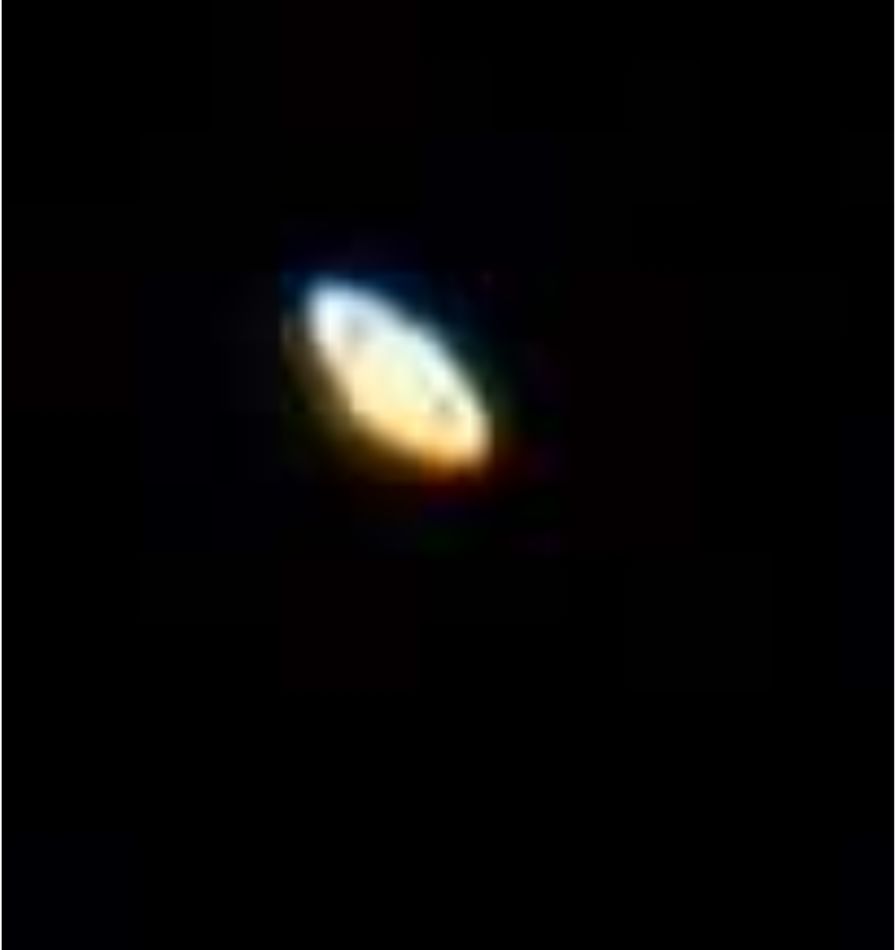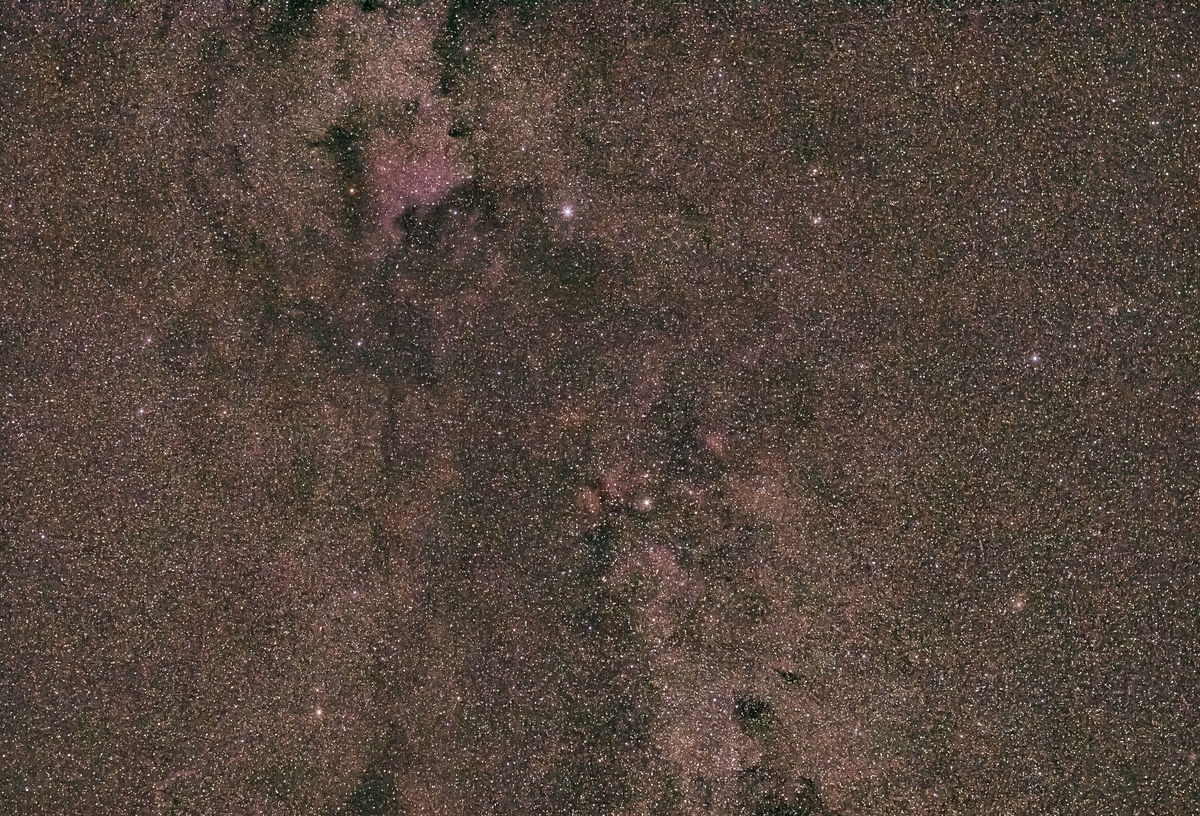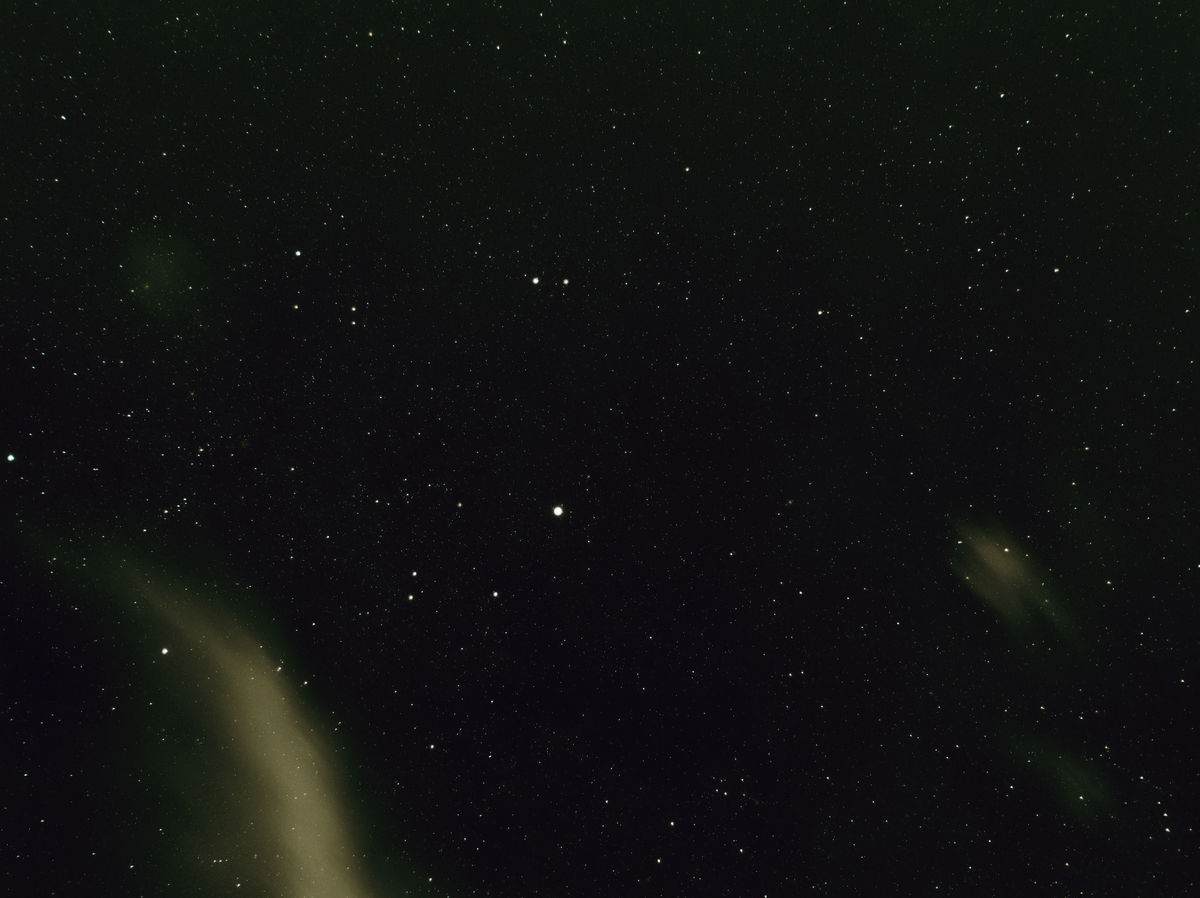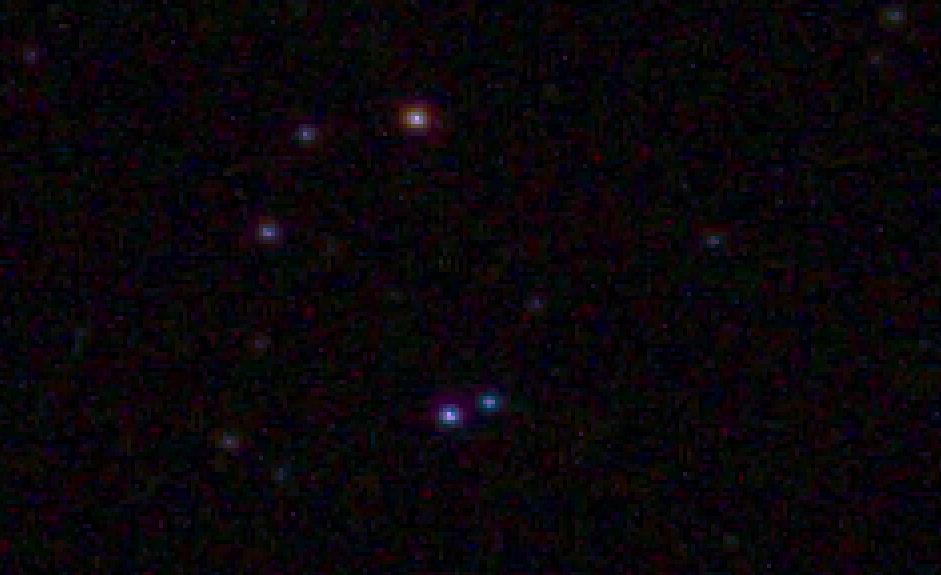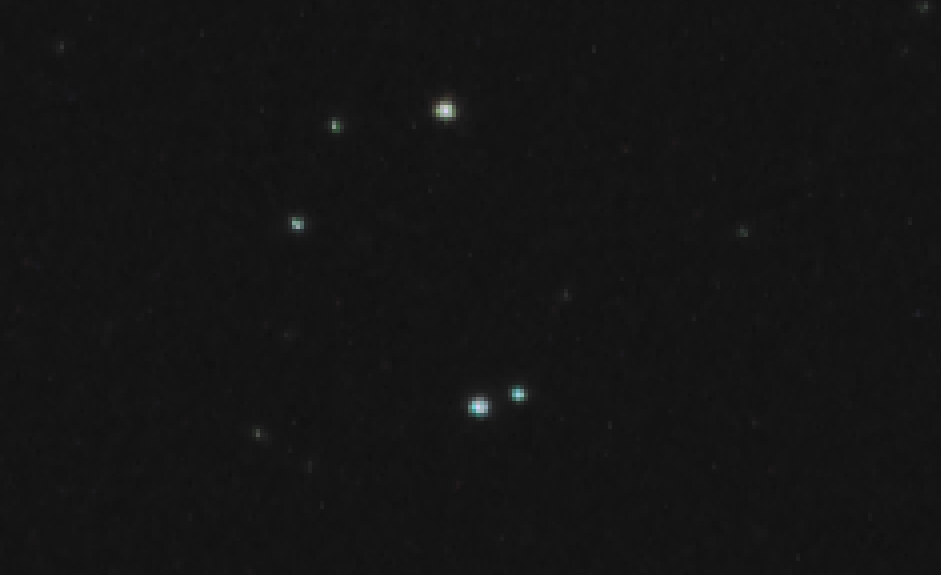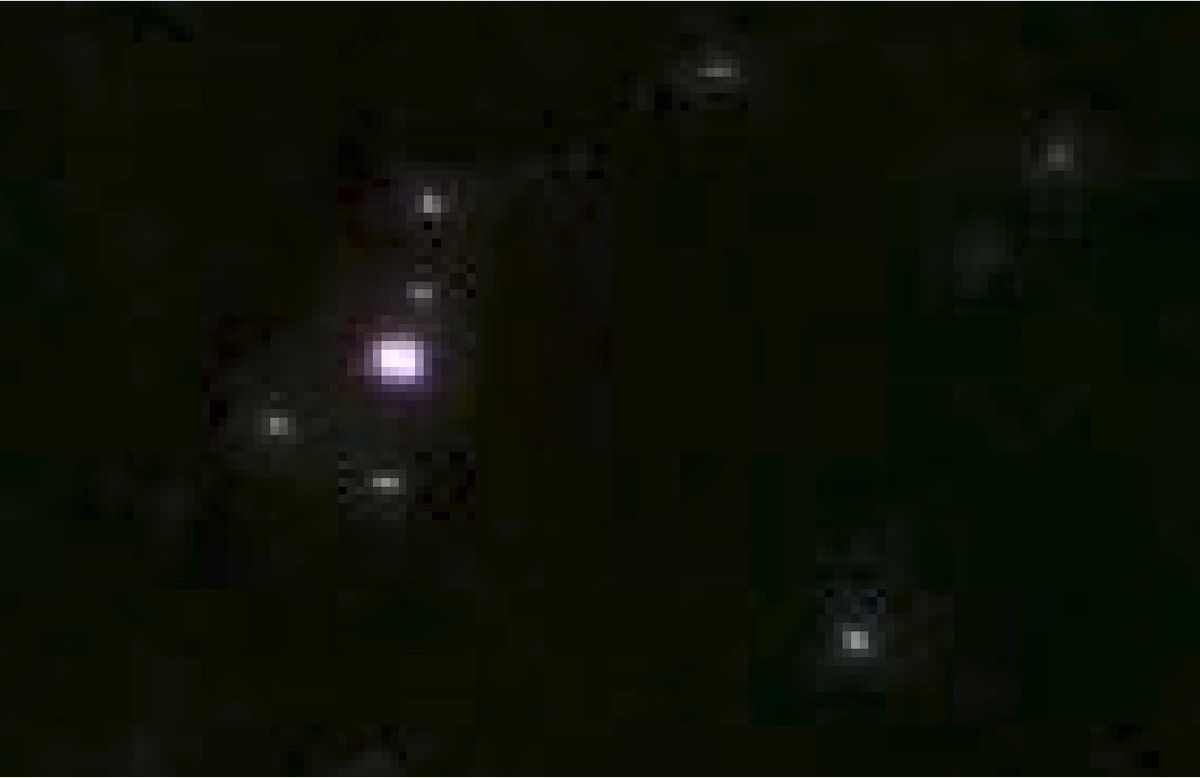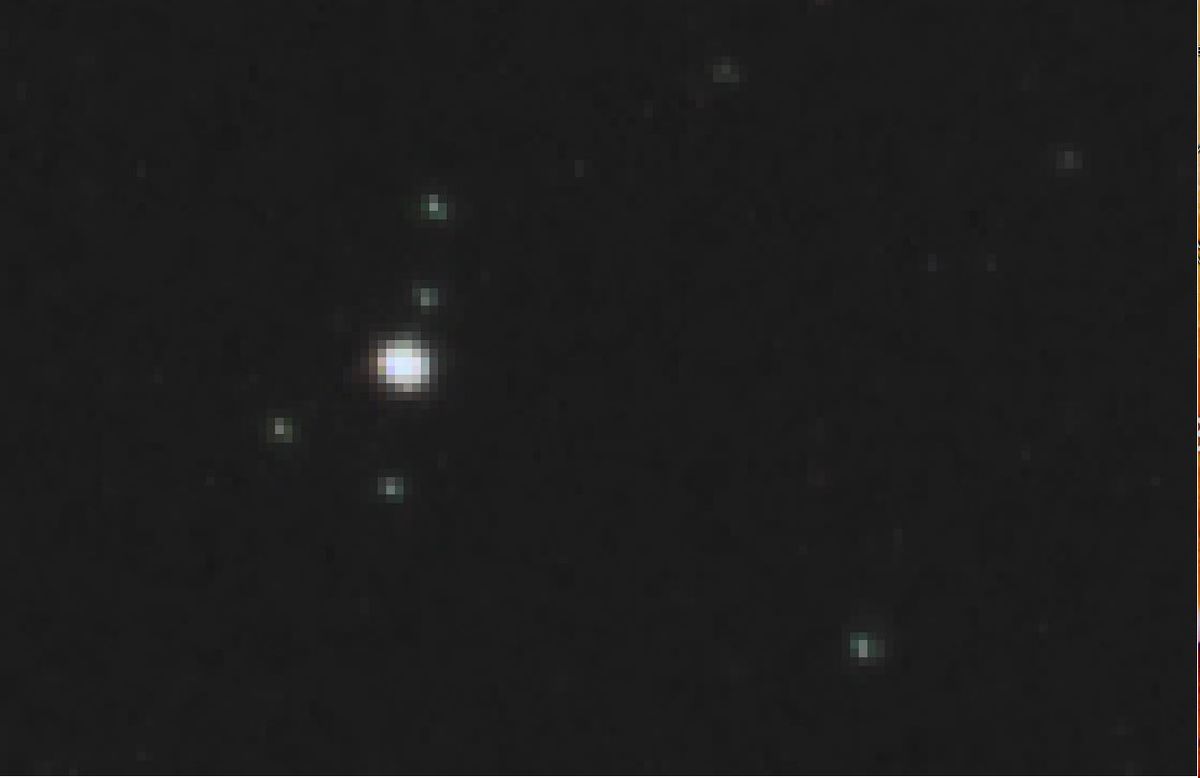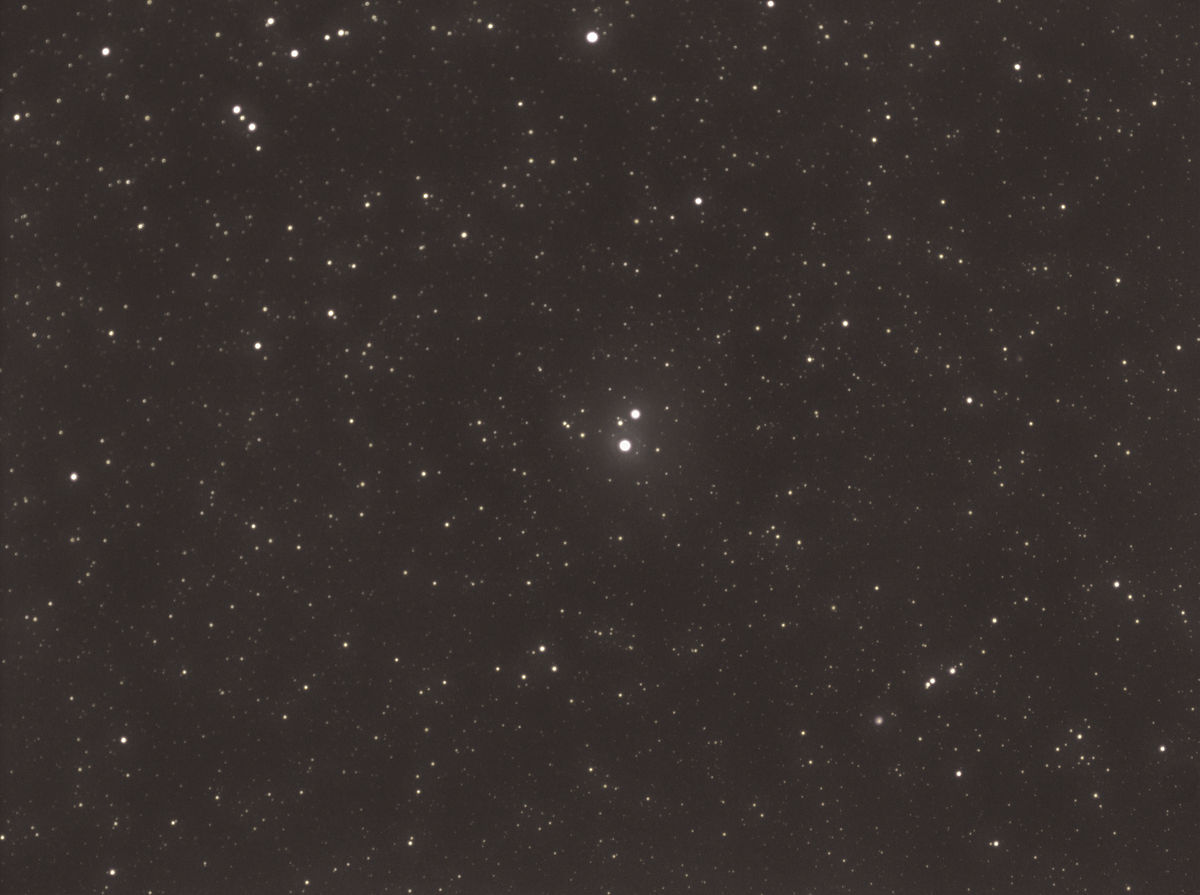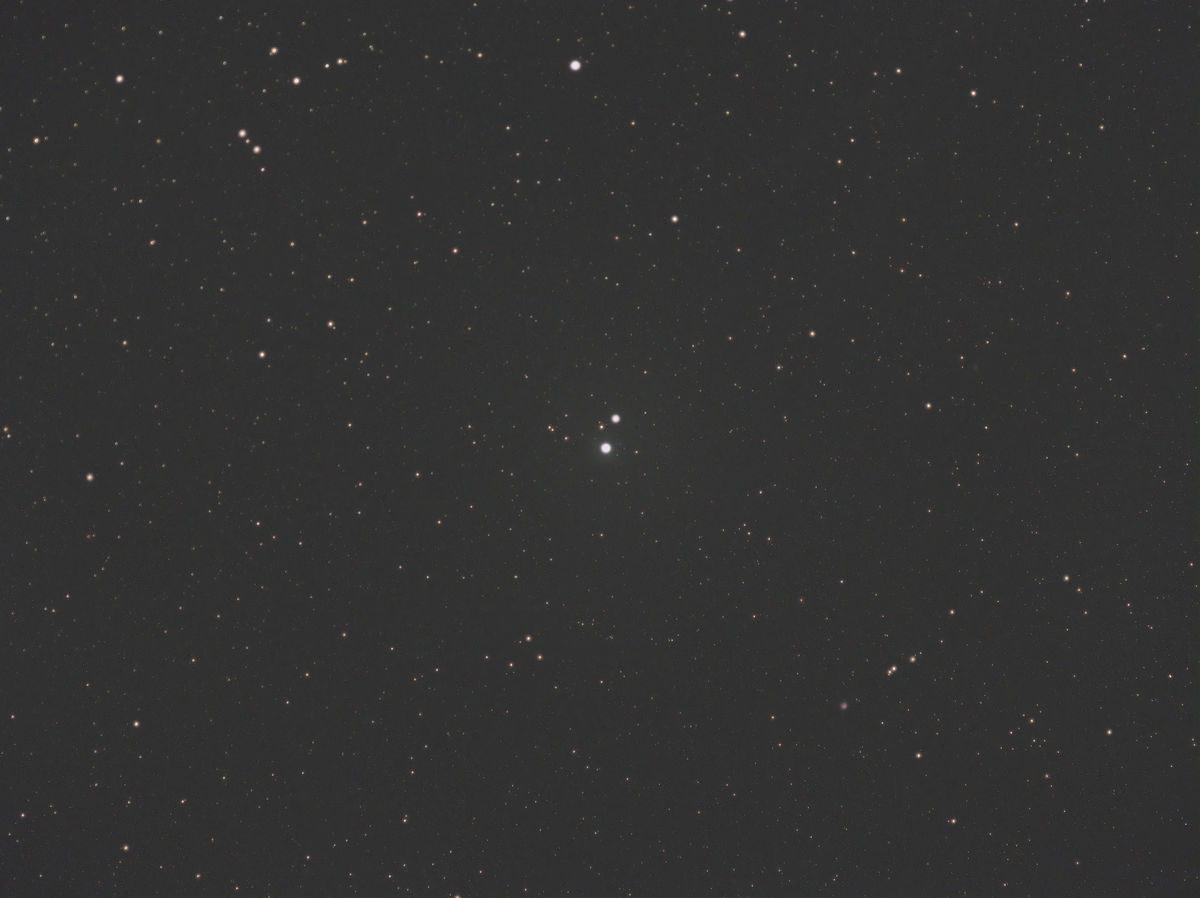Wide angle zoom choIce
May 7, 2022 10:52:06 #
I am prepping to return to Ft.Collins, Colorado & cutting back on Asto time, but have a few ?s.
Your big dipper foto w/Tamron 24mm/1.4 clearly registered Alcor @ magnitude,~ 4. Shot wide open? Time & ISO available?? I am thinking that's only 3 stops to f4 or 1 stop to some of my Oly-Zuiko lenses. Another project for me is making navigation star maps w/ ther constellation's limited to +4 magnitude for that grandson to learn the nite sky. HARey's book was what I used w/ my 3 sons, but we marked it up too much to be useful.
Lonely Spec put to rest my project to panorama Milky Way w/ C-5 as it took 58k+ frames & I doubt I have that many years left to shoot & process them, tho that grandson will inherit the C-5 & Who knows ? Like @2yo he flushed a potato that was pure Yukon gold for the plumber
Attached are 2 fotos of Jupiter/ Saturn 21Dec21 conjunction taken on old Linhof ball mount screwed to table. Exif data N/A but taken @ 600mm (A6300 = 900mm) f6.3 Sony 200-600 telly. Surprised me 4 moons of Jupiter registered + w/a gob of imagination also Saturn. Used GIMP 10.2 to crop & scale for post to FaceBk. Sadly only FaceBk screenshot is image available now. The Saturn solo foto shows horrible CA of the Sony lens, but it does show it is possible to capture a single shot image using A6300 auto focus (✓'d w/ peaking) & auto exposure w/ bracketing! I use this to gather Exposure vs Moon magnitude data to eventually develop a Multiple Regression equation if no one can solve that w/ algebra!
Thanks for your patience readung this far, but if you prefer I can limit future queries to haiku's 5-7-5/three lline format?
Ernie
Ooops I cant find Jupiter+ 4 moons screen shot. Try, try again later.
Your big dipper foto w/Tamron 24mm/1.4 clearly registered Alcor @ magnitude,~ 4. Shot wide open? Time & ISO available?? I am thinking that's only 3 stops to f4 or 1 stop to some of my Oly-Zuiko lenses. Another project for me is making navigation star maps w/ ther constellation's limited to +4 magnitude for that grandson to learn the nite sky. HARey's book was what I used w/ my 3 sons, but we marked it up too much to be useful.
Lonely Spec put to rest my project to panorama Milky Way w/ C-5 as it took 58k+ frames & I doubt I have that many years left to shoot & process them, tho that grandson will inherit the C-5 & Who knows ? Like @2yo he flushed a potato that was pure Yukon gold for the plumber
Attached are 2 fotos of Jupiter/ Saturn 21Dec21 conjunction taken on old Linhof ball mount screwed to table. Exif data N/A but taken @ 600mm (A6300 = 900mm) f6.3 Sony 200-600 telly. Surprised me 4 moons of Jupiter registered + w/a gob of imagination also Saturn. Used GIMP 10.2 to crop & scale for post to FaceBk. Sadly only FaceBk screenshot is image available now. The Saturn solo foto shows horrible CA of the Sony lens, but it does show it is possible to capture a single shot image using A6300 auto focus (✓'d w/ peaking) & auto exposure w/ bracketing! I use this to gather Exposure vs Moon magnitude data to eventually develop a Multiple Regression equation if no one can solve that w/ algebra!
Thanks for your patience readung this far, but if you prefer I can limit future queries to haiku's 5-7-5/three lline format?
Ernie
Ooops I cant find Jupiter+ 4 moons screen shot. Try, try again later.
May 7, 2022 10:53:09 #
Sidwalkastronomy
Loc: New Jersey Shore
I'm looking to use my
Tamron 10-24 mounted on my Canon 77D or T7i and then mounted on my
Celestron AVX GEM TRACKING.
FOCUS IS BY FAR THE HARDEST.
I use live view and the 5x or 10x to help.
Tamron 10-24 mounted on my Canon 77D or T7i and then mounted on my
Celestron AVX GEM TRACKING.
FOCUS IS BY FAR THE HARDEST.
I use live view and the 5x or 10x to help.
May 7, 2022 12:57:29 #
FYI Here's Jupiter + 4 m00ns
Another example of knowing how to calculate exposure for Io, Ganymede, Europa & Callisto in relation to each other & Jupiter from magnitude could be helpful as starting point in getting each exposed optimally?
Another example of knowing how to calculate exposure for Io, Ganymede, Europa & Callisto in relation to each other & Jupiter from magnitude could be helpful as starting point in getting each exposed optimally?
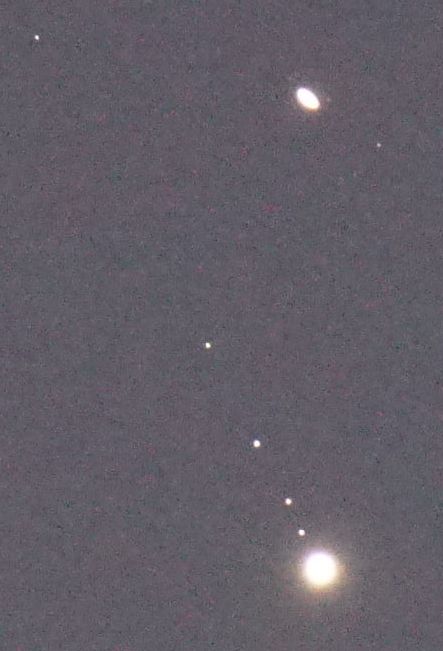
May 7, 2022 13:08:44 #
notBert wrote:
I am prepping to return to Ft.Collins, Colorado &a... (show quote)
I didn't write down the f-stop, but it was very likely at f1.4 on that Rokinon 24mm f1.4 lens. When I stop down, the brighter stars tend to grow spikes originating in the aperture blades of the lens. Lenses with more aperture blades tend to reduce this effect.
The big dipper shot was 30 sec at ISO 800 and was tracked. Also, I was using a camera that was modified for IR and I used a red filter. Then converted to B&W. The red filter limits what wavelengths of light reach the sensor and tends to produce better looking stars. Even a non-modified camera could benefit from this.
Here is another shot, North American Nebula, taken with the Rokinon 24mm f1.4 lens. But this time I did stop down a bit. I didn't write the f-stop value down, but on the bright star, Deneb, I can see the spikes. It was 30 sec at ISO 200. I used a Sony A77ii which I have since sold. No filter was used for this image (actually a stack of images stacked in the free application Sequator, and then stretched in Photoshop to make the nebula more visible.
Adding a 2nd image. Again the Rokinon 24mm and at f1.4. This time, not tracked. Just 6 sec at ISO 1600 using an Olympus EM5ii modified for IR, but no filter. There were some clouds as you can see. I did a denoise and white balance to fix the color.The star is Capella. No spikes = shot wide open.
Ask whatever questions you want.
As for focusing. I follow this method. Using live view, get the best focus you can on a bright star. And while doing this focus, look for dimmer stars to appear. I then turn my attention to a very dim star, and very carefully adjust for max brightness. I also focus magnify on that dimmer star. As stars go out of focus, their light is spread over a larger area. And as they come into focus, all their light becomes concentrated in a smaller area, and it becomes brighter. Our human eyes cannot see this effect on a brighter star. But it is very apparent on a very dim star. Once you practice this method, you should obtain perfect focus every time.
By the way, I processed the 2nd image using some astro software called Nebulosity 4. Images taken with a sensor that has a Bayer Matrix for color need to demosaiced. Demosaicing is not an exact science and the commercial editing packages such as Adobe and DxO and others go to great lengths to get the color right at the cost of loosing some of the detail. For astro images, exact color accuracy is not a high priority. Great detail is the priority. And Nebulosity 4 (and there are others) use demosaicing algorithms to get the detail right, thus better looking stars.
May 7, 2022 13:27:58 #
Adding some additional examples to show the effect of demosaicing using conventional software vs using Nebulosity 4.
The first two images compare some stars from the same image and are highly cropped. The first image is using Adobe's demosaicing algorithm on a RAW file. The 2nd is using Nebulosity 4. Notice how much cleaner the stars are. Keep in mind that commercial demosaicing SW has to be trying to figure out where edges are and over sampling to make sure color accuracy is the best it possibly be. Astro software has no concerns for edges and certainly doesn't worry about color accuracy. It just uses the simplest algorithm possible. Of course, to use astro imaging SW on landscapes or portraits, you aren't going to be pleased with color accuracy.
And for images 3 and 4, I picked some other stars to look closely at. Again, a world of difference.
I should add that Nebulosity 4 is not intuitive to use and there is a learning curve. There are also other astro imaging options to choose from and they come in different costs and learning curves also.
The first two images compare some stars from the same image and are highly cropped. The first image is using Adobe's demosaicing algorithm on a RAW file. The 2nd is using Nebulosity 4. Notice how much cleaner the stars are. Keep in mind that commercial demosaicing SW has to be trying to figure out where edges are and over sampling to make sure color accuracy is the best it possibly be. Astro software has no concerns for edges and certainly doesn't worry about color accuracy. It just uses the simplest algorithm possible. Of course, to use astro imaging SW on landscapes or portraits, you aren't going to be pleased with color accuracy.
And for images 3 and 4, I picked some other stars to look closely at. Again, a world of difference.
I should add that Nebulosity 4 is not intuitive to use and there is a learning curve. There are also other astro imaging options to choose from and they come in different costs and learning curves also.
May 7, 2022 14:02:01 #
Also, you were asking about Alcor. Here is a sample using the Rokinon 135mm f2 lens of Mizar and Alcor. This was 20 sec at ISO 800 and wide open. I used Adobe's demosacing and it would have been sharper using Nebulosity 4.
I decided to do this image with Nebulosity, then Photoshop and have added it.
I decided to do this image with Nebulosity, then Photoshop and have added it.
If you want to reply, then register here. Registration is free and your account is created instantly, so you can post right away.
